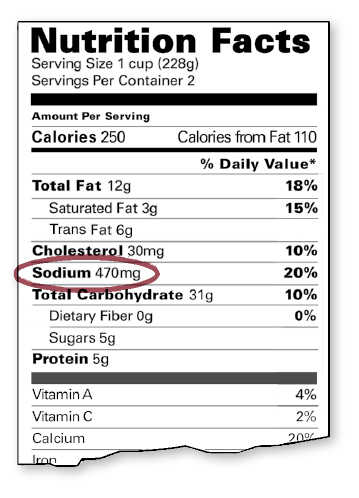Most people with heart failure must limit their daily sodium intake to less than 2,000 milligrams (mg) per day.
In order to stick to your limit, youll need to know how much sodium is in the foods you eat. This information can be found on packaged food labels.
When evaluating the label for sodium content, pay special attention to serving size and servings per container. The amount of sodium listed is per serving-not for the whole package. If you eat more or less than what the manufacturer considers one serving, youll have to do the math.

Lets use this food label as an example:
Serving size = 1 cup
Servings per container = 2
Sodium = 470 mg
If you eat the entire container (2 cups) of this food, you will have consumed
470 mg x 2 = 940 milligrams of sodium
Another number on the nutrition label that can be misleading is the percent of daily value (% DV). When it comes to sodium, this percentage is based on 2,400 mg a day, not your goal of 2,000 mg. That means the sodium in a serving is actually a higher percentage of your daily limit than what is listed on the label.